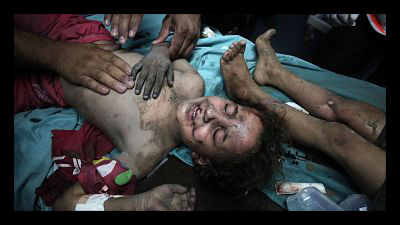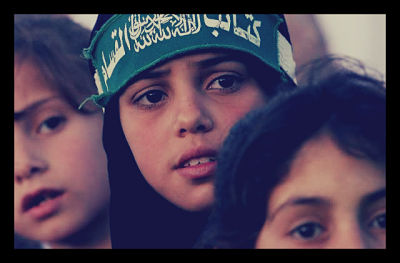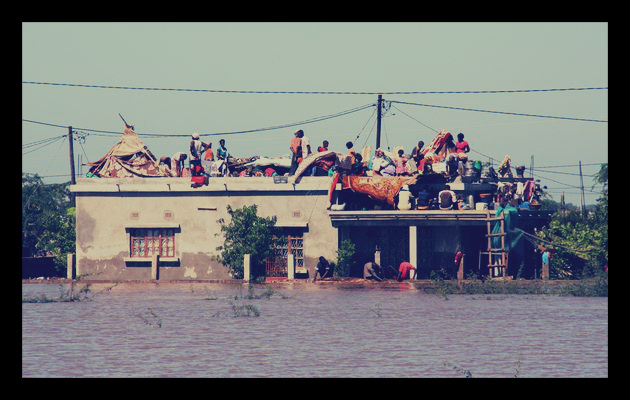
U.N. Secretary General Ban Ki-Moon has stated that Palestinians in Gaza currently face an “enormous reconstruction task.” While rebuilding will probably be left up to humanitarian aid organizations, these organizations will depend on donations from the international community. International organizations play an important role in the economy of the Palestinian territories.
1. United States ($440 million)
Despite being in a difficult position in the Middle East, the United States is the largest donor to the Palestinian territories. On top of military aid to Israel, the U.S. has contributed humanitarian and economic recovery aid to the Gaza and West Bank in an attempt to alleviate poverty and suffering in those areas.
2. European Union ($370 million)
The European Union provides aid to the Palestinian territories in order to improve areas that are important in forming a thriving and peaceful state and relieving poverty. The European Union’s aid assists the Palestinian Authority in providing social assistance, supporting public service delivery, paying the salaries of public workers and supporting the private sector strengthens the rule of law and improves sanitation and water. Its total humanitarian assistance for Gaza and West Bank this year is at around $42.3 million. Two-thirds of this is allocated for emergency response and food assistance in Gaza.
3. UNRWA ($310 million)
UNRWA is seen mostly as a stabilizing agency in Gaza and West Bank, providing education, health care and food in those areas. Although Israel has accused the organization of being one-sided and members of U.S. Congress are concerned that U.S. aid to UNRWA could be funding Hamas, UNRWA has continued to provide services to Palestinian refugees in the Middle East.
4. United Kingdom ($136 million)
Although the United Kingdom believes that Israel has a right to self-defense, it is currently debating if they should still sell arms to Israel. Support from the United Kingdom for Gaza and West Bank is also large. In 2014, the United Kingdom will give $19 million in aid to the Palestinian Authority, which will be used to provide education needs as well as alleviate hunger and poverty in the Palestinian territories.
5. Japan ($76 million)
Japan is very outspoken in its support for the Palestinian territories. In July, Japan promised $5.5 million in humanitarian aid to Gaza to assist in distributing medicine, food and improving water and sanitation. Some of Japan’s 2014 bilateral aid spending will go to West Bank, improving public services in Jordan Valley and strengthening water infrastructure in Jericho City.
6. Germany ($55 million)
Germany’s aid programs in Gaza and West Bank highlight economic development, security, governance, environment and water infrastructure as important areas to work on. On top of strengthening institutions to provide and regulate water services, Germany works with the Palestinian Ministry of Women’s Affairs to empower women to take on management positions in the water sector. Germany also works with refugee communities in the West Bank and provides psychosocial support in Gaza’s schools.
7. France ($40 million)
Through the French Development Agency’s investments in water and energy, France has been supporting Gaza and West Bank humanitarian rebuilding efforts. Last year, France gave $25.7 million in aid to the Palestinian Authority. In July, President François Hollande stated that France would give almost $15 million to Gaza. Almost $11 million of that will go to the Palestinian Authority, and the rest will go to Gaza-based NGOs.
Christopher Gunness, a spokesman for UNRWA, said that the work ahead of them in reconstruction efforts is enormous. “Some estimates say as many as 10,000 homes have been damaged or destroyed, affecting tens of thousands of people. So the catastrophic human displacement crisis is morphing into a homelessness crisis on a massive scale.”
– Colleen Moore
Sources: Devex, International Business Times
Photo: The Guardian






 The nation of Mozambique experienced one of the worst floods in recent history due to extremely high amounts of rainfall throughout the month of January. Flooding in Mozambique damaged the province of Gaza. Over 250,000 have been affected by the floods, with 150,000 people forced out of their homes in the province and over 100 killed.
The nation of Mozambique experienced one of the worst floods in recent history due to extremely high amounts of rainfall throughout the month of January. Flooding in Mozambique damaged the province of Gaza. Over 250,000 have been affected by the floods, with 150,000 people forced out of their homes in the province and over 100 killed.